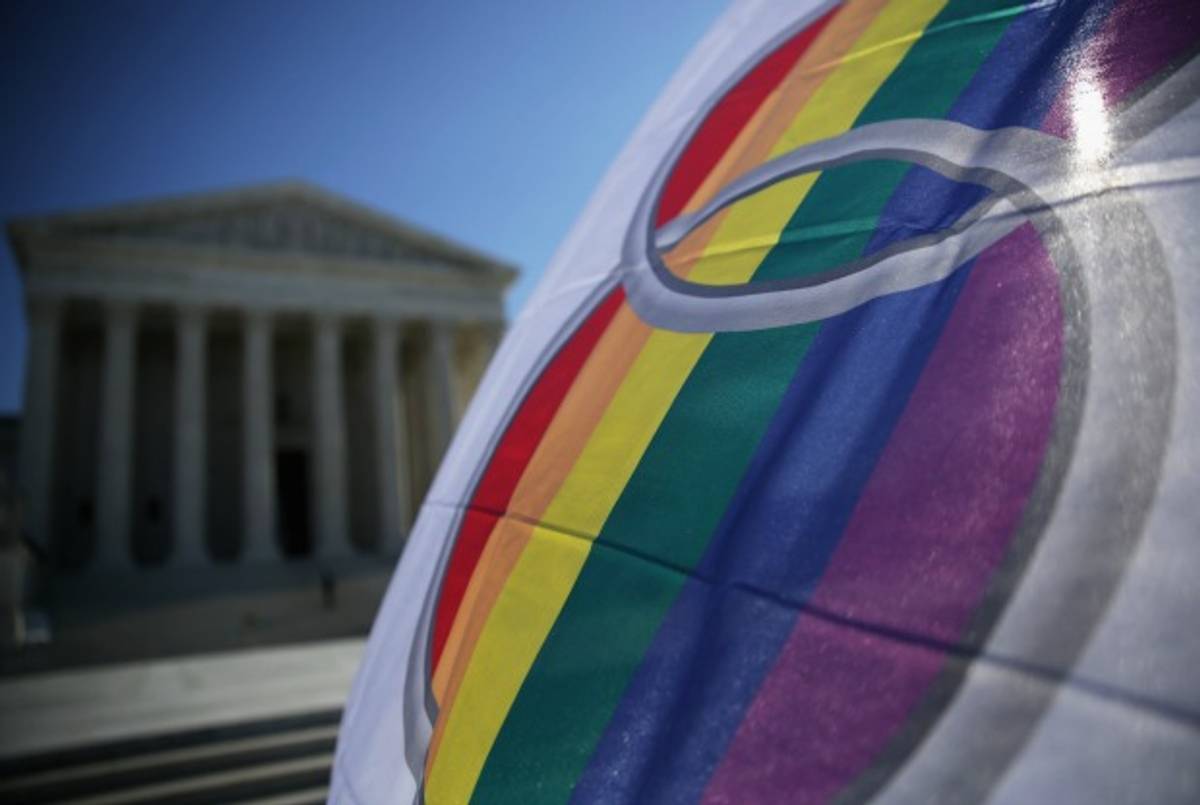
The proceedings about same-sex marriage in the Supreme Court last Tuesday began on a tense note. I was there. Almost immediately, Justice Roberts asserted that we are talking not simply about expanding marriage to include same-sex couples, but about fundamentally redefining marriage in America. The term “millennia” was echoed around among the justices: Hasn’t marriage “for millennia” been defined as a union between a man and a woman? Who are we to suddenly change it?
As a rabbi present for the deliberations, I found it remarkable that the justices seemed to speak of marriage in such binary terms. After all, in the Jewish tradition, we have a long view on “the millennia.” As I listened, I wished I could pass a note to the chief justices in order to point out that for millennia, polygamy was in fact the essential definition of marriage. In Judaism, it wasn’t until about one thousand years ago that Rabbeinu Gershom famously enacted a ban on husbands taking multiple wives.
When Justice Bader Ginsburg joined in the conversation, her voice was quiet and the room palpably leaned forward to hear her insights. And indeed, she didn’t disappoint. “Marriage today is not what it was under the common law tradition, under the civil law tradition,” she said. “[Same-sex couples] wouldn’t be asking for this relief if the law of marriage was what it was a millennium ago. I mean, it wasn’t possible. Same-sex unions would not have opted into the pattern of marriage, which was a relationship, a dominant and a subordinate relationship. Yes, it was marriage between a man and a woman, but the man decided where the couple would be domiciled; it was her obligation to follow him. There was a change in the institution of marriage to make it egalitarian when it wasn’t egalitarian. And same-sex unions wouldn’t…fit into what marriage was once.”
As the blogger Ian Millhiser pointed out on the Think Progress, Bader Ginsburg meant that same-sex marriages were inconceivable when marriage was defined by gender roles that assert male dominance. By removing patriarchy from marriage, the inherent egalitarianism of same-sex marriage becomes an undeniable possibility.
Sitting in that courtroom, I realized that Justice Bader Ginsburg just unwittingly forwarded a critically important insight about the Torah that I have been trying to articulate for some time. In the book of Leviticus, we read the infamous injunction against homosexuality (Leviticus 18:22): “Do not lie with a male as you lie with a female. It is an abomination.” Justice Bader Ginsburg clarified Leviticus’ problem with homosexual unions: in a patriarchal society, putting a male in the “role of a woman” was considered an act of abuse and debasement. In our modern discourse, however, we have moved on to egalitarianism. We seek no longer to define gender or marriage by roles of dominance and subordination.
In effect, Justice Bader Ginsburg pointed out that marriage has already been fundamentally redefined in our society; that limiting the definition of marriage solely to a man and a woman is dangerously anachronistic if we indeed strive for the more just value of egalitarianism. And indeed, in non-Orthodox Judaism we have moved on. When I sit with couples who are about to get married, I explain to them about the patriarchal language of the ketubah, a Jewish marriage contract. I point out the way that the wedding ceremony had its roots in the male “acquiring” the female. We acknowledge this past together and then agree to add onto the ceremony rituals that reflect our modern values of equal partnership in marriage.
Justice Ruth Bader Ginsburg, therefore, has taught some of the most important Torah of our time. Like Rabbeinu Gershom, who responded to the changed reality of his time a millenium ago by banning the abusive practice of polygamy, Bader Ginsburg sees a need to respond to the changed realities of our time as well. She teaches us not in a Jewish context, but in an American one, as her insights resonate deeply with Jewish wisdom.
Jews have a long tradition of re-framing and changing our understanding of injunctions and permissions based on new insights about justice and compassion. Bader Ginsburg’s wisdom shows us how we must respond to ancient texts that vilify homosexuality and seemingly preclude same-sex marriage: by following the rabbinic process of embracing change for the sake of human dignity, justice, and holiness.
Previous: Ruth Bader Ginsburg’s Feminist Passover Message
Landmark Gay Rights Protest Turns 50
Rabbinic Scion Clinches Same-Sex Marriage
Gil Steinlauf is a Senior Rabbi at Adas Congregation in Washington, DC.